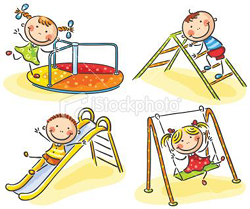Sensory Integration is the ability to perceive, organize, and interpret sensory experiences in order to plan and participate in occupations, such as play, self-care, and school-work. It contributes to skill development and learning and is linked with emotional states. Sensory Integration therapy is designed to create adaptive responses. These are successful responses to an environmental challenge in which a child is an active participant. These responses create lasting changes in the brain.
Sensory modulation, on the other hand, refers to the ability to respond in a graded manner in relation to incoming sensations, neither over- or under-reacting to them. It is one contributor to the ability to self-regulate and manage our behaviors and emotions in a socially acceptable manner. It also allows us to function in an optimal arousal range so that we can pay attention to what’s important and “shut out” what’s not.
 Hands on Therapy administers The Sensory Integration and Praxis Test (SIPT) to measure the sensory integration processes that underlie learning and behavior difficulties seen in learning disabilities and emotional disorders. The SIPT is the gold standard in assessment of sensory for integration and praxis difficulties.
Hands on Therapy administers The Sensory Integration and Praxis Test (SIPT) to measure the sensory integration processes that underlie learning and behavior difficulties seen in learning disabilities and emotional disorders. The SIPT is the gold standard in assessment of sensory for integration and praxis difficulties.
Praxis is a uniquely human skill, and is the end-product of a well-integrated sensory system. Praxis involves 3 main components: ideation, planning, and performance. All 3 components work together to spontaneously sequence and organize movements in a coordinated way to complete unfamiliar motor tasks. For example, it helps us figure out how to use our hands and body in skilled tasks like playing with toys, sports, using a pencil or fork, building a structure, straightening a room, organizing our time, or engaging in any number of occupations. Often, when there are deficits in one or more areas of sensory processing, dyspraxia results.
 Vestibular perception refers to the information that is provided by the receptors within the inner ear. It is concerned with the perception of movement and gravity, as well as the development of balance, equilibrium, postural control, and muscle tone. The vestibular system is integral to sensory integration, providing functional support for occupations. It is also considered to be an important center for timing, sequencing, bilateral coordination, and the development of lateralization. The vestibular system also impacts the coordination of speech, hearing, muscle tone, vision, reading, writing, and even emotional behaviors.
Vestibular perception refers to the information that is provided by the receptors within the inner ear. It is concerned with the perception of movement and gravity, as well as the development of balance, equilibrium, postural control, and muscle tone. The vestibular system is integral to sensory integration, providing functional support for occupations. It is also considered to be an important center for timing, sequencing, bilateral coordination, and the development of lateralization. The vestibular system also impacts the coordination of speech, hearing, muscle tone, vision, reading, writing, and even emotional behaviors.
- Visual skill impacts how children logically approach many tabletop activities, including writing and drawing, following mazes, copying, throwing a ball at a target, and figuring out how to use new tools or toys.
- Sound processing is also frequently associated with vestibular disintegration. This is because the receptors for both senses are located within the ear. Ineffective sound processing can make a significant impact on communication skills.
 Proprioceptive information is acquired by receptors in the muscles, joints, and tendons, which provide one with conscious and unconscious awareness of posture and the direction, and force of movements. Children receive proprioceptive inputs by pushing, pulling, lifting, and dragging against resistance. To a lesser extent, they also gain this information through traction or compression in their joints.
Proprioceptive information is acquired by receptors in the muscles, joints, and tendons, which provide one with conscious and unconscious awareness of posture and the direction, and force of movements. Children receive proprioceptive inputs by pushing, pulling, lifting, and dragging against resistance. To a lesser extent, they also gain this information through traction or compression in their joints.
- Tactile (touch) information is not only necessary for many facets of learning, such as concepts of size, shape, texture, etc., but also provides a meaningful basis for the development of a body scheme (perception of where one is in relation to the external world).